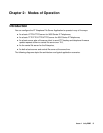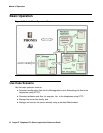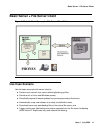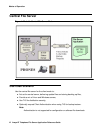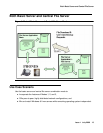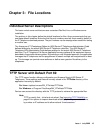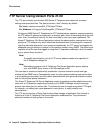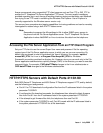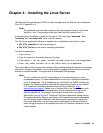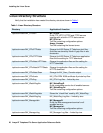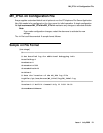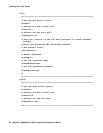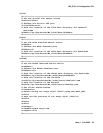
HTTP/HTTPS Servers with Default Ports 411/81/80
Issue 1 July 2006 17
Avaya recommends using a specialist FTP client program such as Cute FTP or WS_FTP to
access the IP Telephone File Server Application FTP server. The more explicit messages
provided regarding log in and change of working directory status provide better user feedback
than trying to use FTP mode in something like Windows File Explorer. Use of Explorer is
currently supported for the Windows server version only.
The servers have comprehensive logging capabilities for tracing problems and can be remotely
interrogated for status using a built-in HTTP status server.
Note:
Note: Remember to program the 46xxsettings.txt file to allow SNMP query access to
the phone from the File Server Application server. The IP Telephone File Server
Application invokes NetSNMP on Linux to retrieve this data from the telephone.
Accessing the File Server Application from an FTP Client Program
Set your FTP client to use the current Super User name and password. Set the operating
system type of the File Server application server to which you are you are connecting. By
default you are placed in what is considered the “home” directory, for example, /opt/ecs/
mvuser/MV_IPTel/ for Linux or c:\Program Files\Avaya\MV_IPTel for Windows.
Successful connection provides the directory list. However, since you can work only in the File
Server application subdirectories, explicitly change (CWD) to the directory you want to use after
successful login. For example, CWD data/FTPdata changes to the Linux subdirectories or
CWD data\FTPdata changes to the Windows subdirectories.
HTTP/HTTPS Servers with Default Ports 411/81/80
Both 9600 Series IP Telephones and 4600 Series IP Telephones support HTTP, and by default,
use the following port assignments:
● Port 411 for TLS download of configuration files from the IP addresses listed in the system
parameter TLSSRVR.
● If configuration file download succeeds, the telephones then attempt to obtain firmware
files from Port 81 from the IP addresses listed in the system parameter HTTPSRVR.
● If the attempt to get firmware files fails, the telephones then use Port 80.
● If the system parameter TLSSRVR is null, Port 80 is used with the IP addresses listed in
the system parameter HTTPSRVR for all file downloads.



